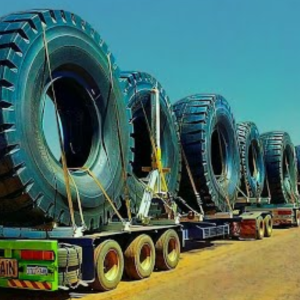
In 1955, the Chevrolet division of General Motors reinvented itself. For 1956 the Chevy was even better, and here’s how.

1956 Chevrolet One-FIfty Handyman
In popular psychology, the offspring in a family follow a regular pattern, allegedly. The oldest child is a sober striver while the youngest is a pampered pet, leaving the middle sibling without a fixed identity. Personally, we don’t put a whole lot of stock in the theory, but the stereotypes of the Middle Child Syndome do remind us a tiny bit of the Tri-Five Chevrolets of 1955 through 1957.
The ’55 introduced the small-block V8 to the world and reestablished Chevrolet as a youthful, sporty brand. Meanwhile, the famously finned ’57 Chevy is a genuine star of pop culture, an avatar for America in the Fifties. That leaves the ’56 sort of lost in the middle, or so it might seem. But among the Tri-Five Chevrolet collector crowd, the ’56 has its own faction of loyal enthusiasts, and rightly so.

The Chevrolet chassis, all new in ’55, was carried forward for ’56 with minor refinements. (See our feature on the ’55 chassis here.) A bit more anti-dive geometry was dialed into the front suspension, and the rear spring mountings were beefed up to reduce sway. There were more significant changes under the hood. Advertised as “the hot one” in 1955, at Chevy for ’56 the tagline was, “This one’s even hotter!”
The 265 cubic-inch V8 featured a redesigned block for ’56 with improved cam oiling and a full-flow oil filter. Oddly enough, the ’55 didn’t have one. The base two-barrel V8 was bumped from 162 hp to 170 hp (with automatic transmission) with a higher-lift cam, which also boosted the four-barrel version from 180 to 195 hp. For the hot Power Pack V8, the compression ratio was raised from 8.0:1 to 9.25:1, increasing the output from 195 hp to 205 hp.
Just before Daytona Speed Week in February ’56, conveniently, Chevrolet released the RPO 411 package, formally known as the Turbo-Fire Special. Borrowed directly from the Corvette, this V8 sported a pair of Carter WCFB four-barrel carbs on an aluminum manifold. Rated at 225 hp at a screaming 5200 rpm, the dual-quad mill listed at $242.10 and was available on all models and body styles except the Sedan Delivery. Chevy’s small-block V8 was now in the high-performance game in a serious way, the rising star of the hot rodding world.

The basic ’55 body shell was continued for ’56 with restyled front and rear ends, while the fuel filler was moved from a door in the left-rear quarter panel to a concealed location behind the left-rear tail lamp. There was a brand new body style as well: the Sport Sedan (above). Buick and Olds had introduced four-door pillarless hardtops the year before, and now Chevrolet had one too, using a distinctive roof stamping, C-pillar, and greenhouse shared with Pontiac.
As in ’55 and before, there were three trim levels: the base One-Fifty, mid-level Two-Ten, and deluxe Bel Air, all available in a range of body styles. Prices ranged from $1,734 for the One-Fifty Utlity Sedan, which featured a parcel shelf instead of a rear seat, to the fancy Nomad wagon, the most expensive Bel Air model at $2,608. Splitting the difference, perhaps, the Two-Ten was the popular choice among consumers, accounting for more than half of the GM division’s 1.56 million passenger car sales for the year. In its massive advertising campaign that season, Chevrolet used a multitude of angles to pitch the ’56 models, but this one below might be our favorite: For sooner and safer arrivals.






